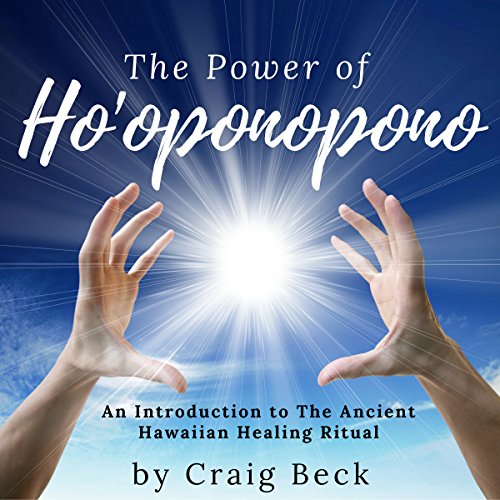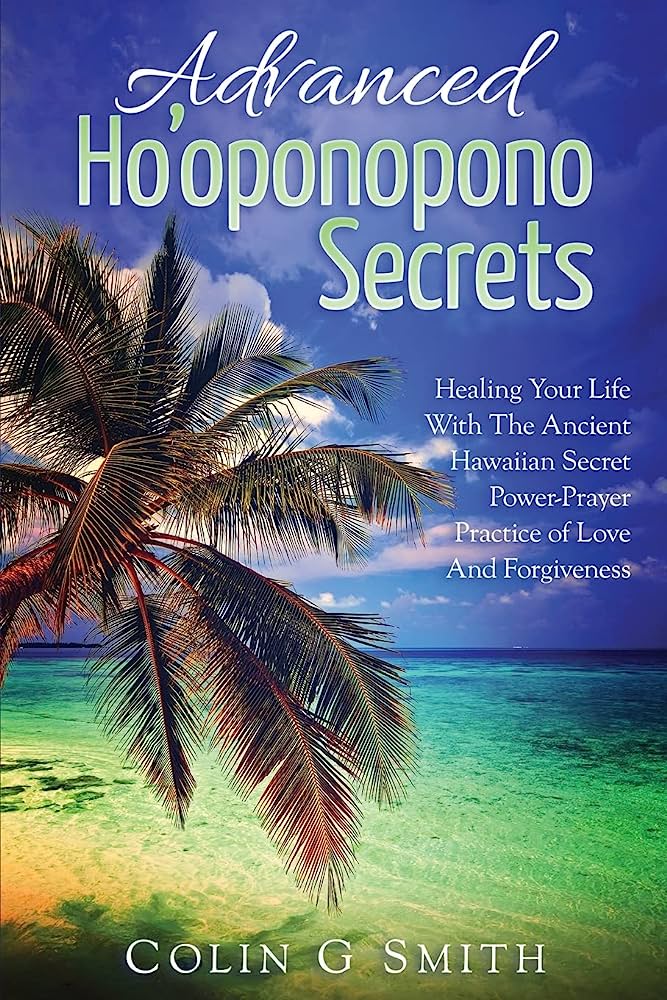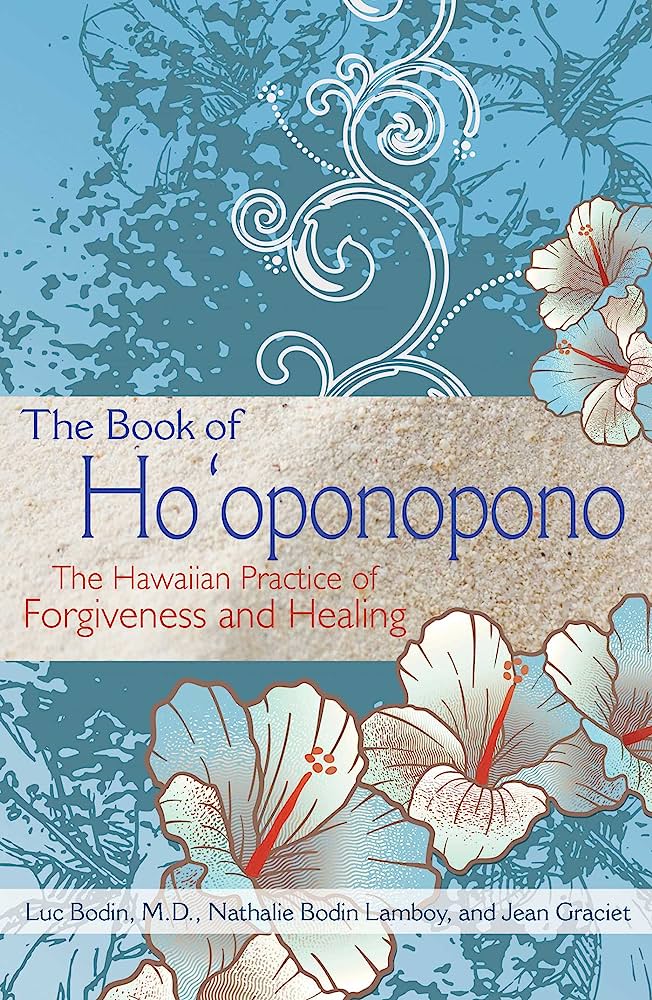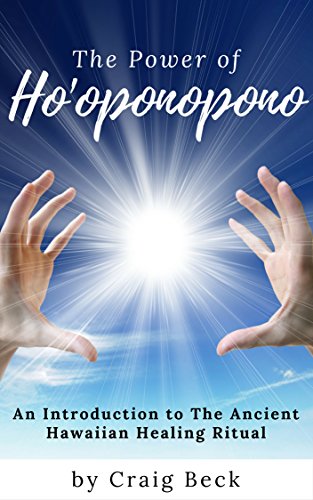Have you ever wondered how music can play a role in the ancient Hawaiian practice of Ho’oponopono? Well, you’re in for a treat because in this article, we will explore the healing power of music in Ho’oponopono and how it contributes to the overall process of forgiveness and reconciliation.
In the realm of Ho’oponopono, music holds a significant place. It is believed that certain melodies and rhythms have the ability to calm and soothe the mind, body, and soul, making them a powerful tool in the healing process. The vibrations and frequencies of music can help to release negative emotions, activate inner healing, and align oneself with higher states of consciousness. Whether it’s through chanting, drumming, or simply listening to soothing melodies, music has the ability to create a serene atmosphere that enhances the effectiveness of Ho’oponopono practices.
In this article, we will delve deeper into the different ways music is integrated into Ho’oponopono rituals and ceremonies. You will learn about the specific instruments and sounds used, as well as the intentions behind each musical element. So, if you’re curious about the healing power of music in Ho’oponopono, keep reading and get ready to discover a whole new dimension of this ancient practice.

Overview of Ho’oponopono
Ho’oponopono is a traditional Hawaiian practice that focuses on healing and reconciliation through the power of forgiveness. It is deeply rooted in the belief that every individual is responsible for their own experiences and has the ability to heal themselves and their relationships. Central to Ho’oponopono is the understanding that our thoughts, memories, and beliefs shape our reality, and by taking responsibility for these aspects of ourselves, we can bring about positive change.
Origins of Ho’oponopono
Ho’oponopono has its roots in ancient Hawaiian culture and has been practiced for countless generations. The word “Ho’oponopono” can be broken down into two parts: “ho’o,” which means to make, and “ponopono,” which means right. Together, they translate to “to make right” or “to rectify.” In traditional Hawaiian families, Ho’oponopono was often practiced as a way to resolve conflicts and restore harmony within the community.

Key Principles of Ho’oponopono
Ho’oponopono is based on several key principles that guide its practice. Firstly, it recognizes that we are all interconnected, and our actions and thoughts can have a ripple effect on those around us. Secondly, it emphasizes the importance of taking responsibility for our experiences and the impact we have on others. Ho’oponopono also emphasizes the power of forgiveness and letting go of resentment and negative emotions.
Traditional Ho’oponopono Practices
Traditional Ho’oponopono practices typically involve gathering in a circle, where each individual takes turns expressing their feelings and concerns. Through dialogue and open communication, the group works collectively to understand and resolve conflicts. During this process, music is often used to create a peaceful and harmonious atmosphere.

Understanding Music in Ho’oponopono
Role of Music in Healing
Music has long been recognized as a powerful tool for healing and transformation. It has the ability to evoke emotions, connect individuals to their spirituality, and create a sense of peace and tranquility. In Ho’oponopono, music is seen as a pathway to healing, helping individuals to release negative energy, connect with their inner self, and open up to forgiveness and reconciliation.
Incorporating Music into Ho’oponopono
Music can be incorporated into Ho’oponopono practices in several ways. It can be used as a background ambiance, creating a soothing and calming environment for the participants. Additionally, specific songs or chants can be sung or played during the practice to enhance the healing process. The choice of music depends on the intention and energy of the gathering, as well as the preferences and cultural background of the individuals involved.
Effectiveness of Music in Ho’oponopono Therapy
The effectiveness of music in Ho’oponopono therapy lies in its ability to bypass the rational mind and connect directly with the emotions and the soul. Music has been scientifically proven to have a profound impact on our brain and body, influencing our mood, heart rate, and even our brainwave patterns. By incorporating music into Ho’oponopono therapy, individuals can experience deep emotional release, heightened states of consciousness, and an overall sense of peace and well-being.
Benefits of Music in Ho’oponopono
Emotional Healing through Music
One of the key benefits of using music in Ho’oponopono is its ability to facilitate emotional healing. Music has the power to evoke deep-seated emotions, allowing individuals to access and release buried feelings of pain, anger, and sadness. Through the healing process of Ho’oponopono, music acts as a catalyst for emotional release, supporting individuals in letting go of negative emotions and finding inner peace.
Enhanced Spiritual Connection
Music has long been used as a spiritual tool in various cultures and traditions. In Ho’oponopono, music serves as a medium to enhance the spiritual connection between individuals and their higher selves. The vibrations and frequencies of music can help individuals align with their spiritual essence, enabling them to access higher states of consciousness and spiritual awareness.
Reduction of Stress and Anxiety
In today’s fast-paced and stressful world, stress and anxiety have become prevalent issues for many individuals. The use of music in Ho’oponopono can help alleviate these stressors by inducing a state of relaxation and calmness. Music has the unique ability to slow down our heart rate, lower our blood pressure, and reduce the production of stress hormones, ultimately promoting a sense of well-being and tranquility.

Types of Music Used in Ho’oponopono
Native Hawaiian Chants and Hymns
Native Hawaiian chants and hymns hold a significant place in Ho’oponopono practices. These traditional chants, known as “mele,” are believed to carry the power of ancestral wisdom and healing. They often incorporate rhythmic patterns and melodic structures that resonate with the cultural and spiritual heritage of the Hawaiian people. The use of native Hawaiian chants in Ho’oponopono creates a deep connection to the land and the ancestors, fostering a sense of rootedness and authenticity in the healing process.
Instrumental Music
Instrumental music is another common type of music used in Ho’oponopono practices. The absence of lyrics in instrumental music allows individuals to focus solely on the melodies and harmonies, creating a space for introspection and reflection. Instrumental music, such as classical compositions or ambient soundscapes, can evoke a wide range of emotions and facilitate deep healing on a subconscious level.
Nature Sounds and Ambient Music
Nature sounds and ambient music are often utilized in Ho’oponopono to create a calming and peaceful environment. The sounds of flowing water, bird songs, and gentle breezes can transport individuals to a natural setting, helping them connect with nature’s healing energy. Ambient music, with its ethereal and atmospheric qualities, can evoke a sense of tranquility and serenity, facilitating the healing process in Ho’oponopono.
Incorporating Music into Ho’oponopono Practice
Creating a Sacred Space
When incorporating music into Ho’oponopono practice, it is essential to create a sacred space conducive to healing and introspection. This can be achieved by setting up a dedicated area with elements that evoke a sense of peace and tranquility, such as candles, incense, and meaningful objects. The sacred space becomes a container for the healing process, providing a safe and nurturing environment for the participants.
Selecting Suitable Music
Selecting suitable music for Ho’oponopono practice requires aligning with the purpose and intention of the gathering. Each individual resonates with different genres and styles of music, so it is important to choose music that speaks to the participants’ hearts and souls. Whether it is traditional Hawaiian chants, instrumental compositions, or nature sounds, the music should evoke a sense of calmness, healing, and spiritual connection.
Developing a Personalized Music Ritual
Creating a personalized music ritual in Ho’oponopono can deepen the healing experience and foster a sense of continuity. This can involve selecting specific songs or chants for each stage of the practice, incorporating moments of silence for reflection, or even inviting participants to bring their own musical instruments to contribute to the collective experience. A personalized music ritual adds an element of intention and personalization to the practice, enhancing its transformative potential.

The Effects of Music on the Mind and Body
Psychological Impact of Music
Music has a profound psychological impact on the human mind. It has the ability to evoke memories, trigger emotions, and create a sense of connection and belonging. In Ho’oponopono, music acts as a powerful tool for self-reflection and introspection, enabling individuals to access deep-seated emotions, memories, and beliefs that contribute to their healing process. The psychological impact of music in Ho’oponopono goes beyond surface-level healing, reaching the depths of the subconscious mind.
Physiological Response to Music
Music has a direct influence on our physiological responses. It can affect our heart rate, blood pressure, and even the release of hormones in our body. In Ho’oponopono, music can induce a relaxation response, promoting a decrease in heart rate, improved blood circulation, and a reduction in muscle tension. This physiological response is crucial in creating a state of relaxation and calmness, allowing individuals to enter into a receptive and healing space.
Music’s Influence on Brainwave Patterns
Music has the ability to influence our brainwave patterns, which are associated with different states of consciousness. Slower rhythms and melodic patterns can induce alpha or theta brainwave states, which are linked to relaxation, meditation, and creativity. In Ho’oponopono, music that resonates with these brainwave patterns can facilitate a deeper connection to the subconscious mind, allowing for profound healing, insight, and personal transformation.
Case Studies on the Healing Power of Music in Ho’oponopono
Testimonials of Music-based Healing
Numerous individuals have experienced profound healing through the use of music in Ho’oponopono. Testimonials often highlight the deep emotional release, spiritual connection, and overall sense of peace that music brings to the healing process. These individuals share stories of transforming deep-seated emotional wounds, resolving long-standing conflicts, and experiencing profound personal growth through the power of music in Ho’oponopono.
Research Findings and Studies
Scientific research has begun to explore the healing power of music in various therapeutic modalities, including Ho’oponopono. Studies have demonstrated that music can have positive effects on mood, stress levels, and overall well-being. Specifically, research has shown that music therapy can reduce anxiety and depression, improve immune system function, and enhance emotional expression and regulation. These findings support the efficacy of incorporating music into Ho’oponopono practices.
Notable Experiences and Success Stories
There are many notable experiences and success stories that highlight the healing power of music in Ho’oponopono. These stories often involve individuals who have experienced profound transformations, both on an individual level and within their relationships and communities. From healing deep childhood traumas to fostering forgiveness and reconciliation in families, these stories showcase the incredible potential of music in facilitating healing and positive change.
Exploring the Therapeutic Components of Music
Rhythm and Tempo
The rhythmic elements of music play a crucial role in its therapeutic effects. Rhythm has the power to synchronize our heartbeat and breathing, creating a sense of calmness and relaxation. The tempo of the music can also influence our mood and energy levels, with slower tempos inducing a sense of tranquility and introspection, while faster tempos can promote vitality and movement. Exploring different rhythms and tempos within Ho’oponopono practices allows individuals to access different aspects of their healing journey.
Melody and Harmony
Melody and harmony are essential components of music that can evoke a wide range of emotions and states of consciousness. Melodies can carry a sense of nostalgia, joy, or sadness, while harmonies can create a sense of balance, unity, and resolve. In Ho’oponopono, melodies and harmonies can help individuals tap into their emotional landscape, facilitating the release of stagnant energy and promoting healing on a deep emotional level.
Lyrics and Mantras
The lyrics and mantras used in music can have a profound influence on our thoughts, beliefs, and overall well-being. In Ho’oponopono, the choice of lyrics and mantras is crucial in cultivating a mindset of forgiveness, love, and healing. Lyrics that affirm positive affirmations, express forgiveness, or invoke feelings of gratitude can support individuals in their healing process and help shift their perspective towards a more compassionate and accepting mindset.
Integration of Music and Mantra in Ho’oponopono
Significance of Mantras in Ho’oponopono
Mantras are sacred sounds or syllables that carry a specific vibration and intention. In Ho’oponopono, mantras can be used to reinforce positive beliefs, intentions, and affirmations. They create a focused and concentrated mindset, allowing individuals to direct their thoughts and energy towards healing and reconciliation. Mantras serve as a powerful tool for reprogramming the subconscious mind and releasing limiting beliefs.
Combining Chants and Music
When chants and music are combined in Ho’oponopono, they create a harmonious and transformative experience. Chants, often derived from ancient Hawaiian traditions, carry a deep sense of reverence and connection to ancestral wisdom. Combining these chants with music amplifies their healing vibrations, allowing individuals to connect with the cultural and spiritual roots of Ho’oponopono, while also cultivating a sense of unity and harmony within the group.
Guided Meditation with Music and Mantras
Guided meditations in Ho’oponopono can be enhanced by the use of music and mantras. Guided meditations serve as a vehicle for exploring the subconscious mind, promoting introspection, and releasing emotional blocks. By incorporating music and mantras into guided meditations, individuals can deepen their meditative experiences, cultivate a state of relaxation and receptivity, and connect with their inner wisdom and healing potential.
Psychological and Emotional Healing with Music
Music as a Tool for Self-Reflection
Music has the power to evoke emotions and memories, making it a valuable tool for self-reflection. Within the context of Ho’oponopono, music can serve as a mirror, enabling individuals to explore their emotional landscape, identify patterns of thoughts and beliefs, and gain insight into their healing journey. Through self-reflection, individuals can begin to understand the root causes of their pain, heal emotional wounds, and cultivate a greater sense of self-awareness and personal growth.
Promoting Emotional Release and Catharsis
Emotional release and catharsis are important components of the healing process in Ho’oponopono. Music acts as a catalyst for emotional release, allowing individuals to access and express deep-seated emotions in a safe and supportive environment. The combination of melodies, harmonies, and rhythms can help individuals tap into the depths of their emotions and release stagnant energy, ultimately promoting emotional healing and a sense of liberation.
Fostering Positive Affirmations through Music
Music has the unique ability to reinforce positive affirmations, supporting individuals in reprogramming their subconscious beliefs and cultivating a mindset of healing and forgiveness. By incorporating positive and empowering lyrics into music used in Ho’oponopono, individuals can reinforce their intentions, shift their thought patterns, and foster a sense of self-compassion and self-acceptance. This process allows for the creation of new neural pathways and the transformation of old, limiting beliefs.
The Power of Intention and Visualization in Music Therapy
Setting Clear Intentions during Musical Healing
Intention is a powerful force that guides the healing process in Ho’oponopono. When combined with music, clear intentions can amplify and direct the healing energy. Before engaging in music therapy, individuals can set clear intentions for their healing journey, focusing on specific areas they wish to address or patterns they want to release. By infusing music with these intentions, individuals can align the vibrations of the music with their desired outcomes, enhancing the transformative potential of the healing process.
Visualizations and Imagery in Music Therapy
Visualizations and imagery can be used in conjunction with music therapy to amplify its healing effects. During Ho’oponopono practices, individuals can close their eyes and visualize themselves surrounded by healing light or immersed in a peaceful natural setting. By combining the auditory stimulation of music with visual imagery, individuals can create a multi-sensory experience that facilitates deep relaxation, spiritual connection, and emotional healing.
Amplifying Healing Effects through Mindful Listening
Mindful listening is an essential component of music therapy in Ho’oponopono. By engaging in active listening, individuals can fully immerse themselves in the auditory experience, paying attention to the nuances of the music and how it resonates within their body and emotions. Mindful listening allows individuals to be fully present in the healing process, deepening their connection to the music, their inner selves, and the transformative power of Ho’oponopono.
Holistic Approach to Healing with Music in Ho’oponopono
Combining Music with Meditation and Breathwork
A holistic approach to healing with music in Ho’oponopono involves combining music with meditation and breathwork. Meditation helps individuals cultivate a state of mindfulness and inner stillness, allowing for a deeper connection to their inner selves and the healing potential of Ho’oponopono. Breathwork techniques, such as deep belly breathing or alternate nostril breathing, can further enhance the healing effects of music, promoting relaxation, clarity, and emotional release.
Addressing Physical, Mental, and Emotional Aspects
A holistic approach to healing recognizes that individuals are complex beings with interconnected physical, mental, and emotional aspects. Music in Ho’oponopono can address these different aspects by promoting physical relaxation, mental clarity, and emotional release. By incorporating music into a holistic healing practice, individuals can achieve a sense of balance and harmony within themselves, supporting their overall well-being and personal growth.
Creating a Balanced Healing Practice
Creating a balanced healing practice in Ho’oponopono involves integrating music with other therapeutic modalities, such as journaling, movement, or energy healing techniques. By combining multiple healing modalities, individuals can access a comprehensive range of resources and support for their healing journey. The integration of music in a balanced healing practice fosters a holistic approach, addressing different aspects of the self and supporting individuals in their transformational process.
Ethical Considerations and Responsibility in Music-based Healing
Respecting Cultural Appropriation
When incorporating music from specific cultural traditions into Ho’oponopono practices, it is essential to approach it with respect and cultural sensitivity. Cultural appropriation occurs when elements from another culture are used without proper understanding or acknowledgment of their significance. To ensure ethical practices, it is important to educate oneself about the cultural traditions associated with the music being used, seek permission from the appropriate sources, and appreciate and honor the traditions from which the music originates.
Fostering Authentic Connection to Music
Authenticity is a core principle in Ho’oponopono practices. When using music in Ho’oponopono, it is important to foster an authentic connection between the music and the participants. This can be achieved by selecting music that resonates with the individuals’ cultural backgrounds, personal preferences, and spiritual beliefs. A genuine and heartfelt connection to the music enhances the healing experience and promotes a sense of unity and respect within the group.
Maintaining Ethical Standards in Practice
Ethical standards are paramount in music-based healing practices. As facilitators or participants in Ho’oponopono, it is crucial to establish and maintain ethical standards that prioritize the well-being and autonomy of all individuals involved. This includes obtaining informed consent, maintaining confidentiality, and creating a safe and inclusive space for healing. By adhering to ethical standards, individuals can ensure that music is used responsibly and with the utmost respect for others.
Conclusion
The healing power of music in Ho’oponopono is a testament to the transformative potential that music holds. Whether through native Hawaiian chants, instrumental compositions, or ambient soundscapes, music has the ability to evoke emotions, promote spiritual connection, and facilitate emotional release. By incorporating music into Ho’oponopono practices, individuals can access deep states of relaxation, release negative energy, and cultivate forgiveness and reconciliation within themselves and their relationships. The exploration of music in Ho’oponopono opens up a world of healing possibilities, empowering individuals to take responsibility for their own healing and personal growth.